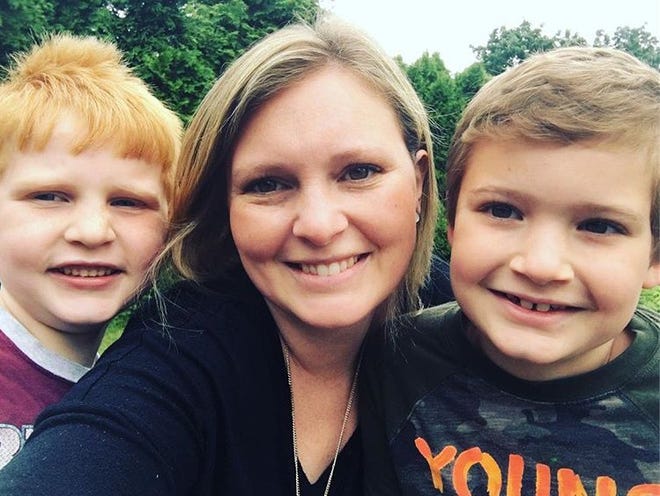When Lacey Trezza learned that her parents couldn’t afford the horse camp she wanted to attend during the summer, she took matters into her own hands.
The 8-year-old hashed out a deal with the co-owner of JL Performance Horses in Poughquag, New York, offering to help with chores on the farm throughout this school year in exchange for a summer spot that costs $3,780.
“They came up with this agreement,” says her mother, Michele. “She sometimes doesn’t go to friends’ houses or birthday parties because she has a commitment to go to the farm,” where she washes pails, stacks hay and feeds ponies three or four afternoons a week.
Summer camp conjures images of days spent swimming, hiking, and taking part in other fun activities as kids take a break from the pressure-filled school year.
But for parents who have to fork over fees for summer-long programs that can be as costly as a year in private school, paying for the experience can be significantly more stressful. Sometimes, as in Lacey’s case, the campgoer may even need to pitch in.
“I save all year for camp for my two children,” says Pamela Perry, of Pleasant Valley, New York, whose sons are 6 and 8. “Every time I go food shopping, I take an extra $10 or more if I can that week (in) cash back, and stick it in an envelope for summer camp.”
Putting money aside is necessary even if the kids stick to a local, less expensive summer program, says Perry.
“Even sending my children to the town camp will cost almost $1,000,” says Perry, director of consumer development for Hudson Valley Parent, a magazine that provides resources for families in the region north of New York City. “So it’s easier to save up all year versus putting the money out at once.”

Camp sessions run the gamut in length and in price. They can be as short as one week or as long as two months. The weekly tab for overnight camp can vary from under $200 for programs that are heavily subsidized by the government or private donations, to over $1,500, according to a 2018 survey by the American Camp Association, which accredits such programs across the U.S. The average weekly tab is $768.
Day camp, meanwhile, ranges from under $100 a week to over $500, with an average fee of $314.
The good news is that 93% of the programs that responded to the association survey offer some form of scholarship assistance.
“Affordability is one of the top issues, barriers to … every child having the experience,” says Tom Rosenberg, the American Camp Association’s president and CEO. “But there are a lot of avenues to seek scholarships and financial aid.”
Types of aid
Types of aid vary, from need-based grants based on a family’s income to scholarships given regardless of income. The key is to start making inquiries in the fall for the following summer.
“Start early, and don’t be shy” says Rosenberg. “Don’t just surf the internet. Get on the phone and absolutely ask the camp’s director and leaders how you might find assistance to go to their camp.’’
Middle-income families shouldn’t assume they won’t get help.
“There’s definitely(a) recognition that middle-income families may have trouble affording camp,” Rosenberg says, noting that many programs give financial assistance based on a sliding income scale. “A great number of families today need assistance, so don’t be embarrassed to ask for help.”
Camp Pemigewassett in Wentworth, New Hampshire, takes boys ages 8 to 15, and it has a financial aid committee that reviews applications for assistance to defray costs, which range from $9,500 for a full seven-week session to $6,250 for a half session this summer.
“By the end of January each year, we’re able to send emails to let families know what we’re able to offer,” says Danny Kerr, the camp’s executive director, who adds grants may range from $1,000 to full scholarships. “There are a handful of boys … who pay nothing or close to nothing.”
Sarah Seward, director of Camp Neshoba North in Raymond, Maine, says that since she and her sister started the camp 32 years ago, it’s been part of their mission to help children attend whether or not they can afford the full price.
“It was important for us to always be able to give back,” she says, adding that her father was able to go to camp as a child because a neighbor paid his fees.
The overnight co-ed camp, which hosts up to 190 children between the ages of 7 to 15, ranges in cost from $6,200 for three weeks to $10,000 for eight. One-week sessions for day campers are $500.
“We’ve had kids come for 50% off. We’ve had kids who’ve fallen on hard times and we’ve not charged anything,” Seward says, adding that free sessions were a frequent offering in the wake of the 2008 recession when many returning families were struggling. The camp also offers discounts for siblings.
Recently Seward has noticed families registering later, perhaps to gain a clearer picture of their budget. But she recommends applying early, in the fall, if you need financial help. “We really like to know who’s coming … in October, November and early December,” she says.
The American Camp Association lists programs on its site that can be filtered based on location, whether you prefer an overnight or day program, a child’s special needs and activities the camps offer.
Setting cash aside
Jackie Curry, who lives in Burlingame, California, says that she typically pays up to $3,000 for her 10-year-old daughter Alexandria to attend summer camp. But she has learned that if she applies early, she may be able to get grants to shave the weekly cost.
“I’m a single parent, and I have to go to work every single day,” says Curry, who works for the biotechnology company Genentech. “So although I may take a week off in the summer, having child care and an experience for my daughter where she’s not only playing but also learning … is something that’s important to me.”
Curry checked with a camp that her daughter attended last summer to see if she might be able to get a discount based on her income and her daughter being a returning camper. That yielded major savings, cutting the fee she will pay from $450 a week to $99, she says.
But that’s just for four weeks. A second camp where Alexandria will likely spend the remainder of the summer won’t start accepting financial aid applications until the session starts. If Curry can’t get any assistance, she says she will just have to pay the full tab of $391 a week.
To deal with such scenarios, Curry sets aside roughly $200 a month to cover not only camp activities but the inevitable extras, like lunches, summer clothes, and possible day trips. “I know I have to plan for the summer, so it’s really not an option,” Curry says.
Clubs, religious groups can help
There are other potential sources of assistance, says Rosenberg. Civic organizations, as well as churches, synagogues and other religious institutions, may help pay for children to go to camp. Some programs give discounts to those who have a family member who served in the military, And some employers may help pay for a day camp or provide child care for staffers.
There are also camps that focus on children with serious illnesses. “Part of their mission is to provide the experience, knowing that the campers can’t begin to afford what they’re offering,” Rosenberg says.
For those who get a late start making inquiries, “heading into spring, a lot of programs find they have last-minute scholarship dollars available and spaces have opened,” says Rosenberg, so “they might be able to help.”
Experience worth the sacrifice
Summer camp is a child care necessity for Lacey Trezza’s mother, Michele, who is an office manager for a chiropractic center, and her father, who works in construction. Michele says it’s difficult to pay for programs for both Lacey and her 14-year-old sister Emma.
“Last year, it cost me $3,500 to send both of my kids to camp, and it’s not something that can happen every year, all summer,” says Trezza who lives with her family in Hopewell Junction, New York, and typically relies on her and her husband’s tax refund to cover the tab.
When Lacey expressed interest in the nine-week camp at the nearby horse farm, Michele says it was difficult to tell her the family just didn’t have the money.
“Of course you never want to tell your kid that you can’t afford something,” she says.
But that’s when Lacey worked out her agreement with the farm’s co-owner, Leah Struzzieri, to work on the farm during the school year in exchange for attending.
Her mother says Lacey’s year-long effort to pay her own way has been valuable. “It teaches them a level of commitment, and you have to work for what you want,” she says. “I don’t think kids should have to be shielded from that.”
Curry, of Burlingame, California, says all the planning and saving needed for her daughter Alexandria to attend camp is worth it in the end.
“She has a great experience and learns a lot,” Curry says, “and that’s more important to me than having to figure out how to get it all together.”




